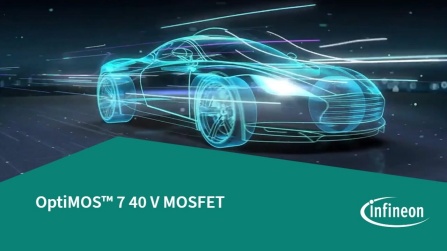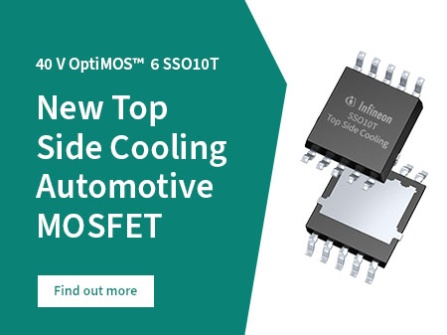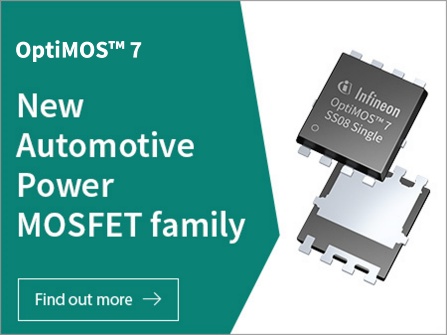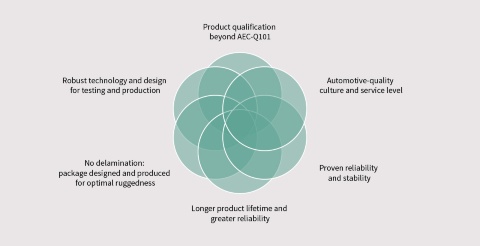Automotive MOSFET
Wide range of Automotive MOSFETs (30 V – 300 V, 600 V - 800 V) in a variety of robust packages for automotive applications - qualified beyond AEC-Q101
Automotive MOSFET subcategories
Automotive MOSFETs with superior performance & quality beyond AEC-Q101
Explore the wide range of automotive-qualified OptiMOS™ power MOSFETs (30 V - 300 V) portfolio, which offers benchmark quality in a variety of robust packages.
Setting the new standard for tomorrow’s automotive applications, Infineon's latest available OptiMOS™ 7 trench technology enables the highest power efficiency, reduced switching losses, and increased SOA for high current applications in combination with innovative & robust packages at the smallest footprint.
12 V automotive motor control evaluation boards are available with latest products in OptiMOS™ 7 and 6 – 40 V MOSFETs combined with MOTIX™ MCU (SoC) TLE987x, for investigation, evaluation and powerful comparison.
Discover more about OptiMOS™ 7
Innovative automotive MOSFET portfolio for 12 V board net applications
Infineon's portfolio of automotive MOSFET for 12 V board net application spreads in various robust lead-less and leaded packages. Discover more about OptiMOS™ 7 40 V
Lead-less:
- S3O8 (3x3): the smallest package
- SSO8 Dual (5x6): combining two MOSFET in one packaging
- SSO8 Single (5x6): the state of the art package
- SSO8 HB (5x6): combining two MOSFETs in half-bridge configuration
- sTOLL (7x8): the super low-ohmic package for highest power density
- TOLL (10x12): highest current capability
Leaded:
- mTOLG (8x8): package with Gullwings for highest power density
- TOLG (10x12): highest current capability
Top-side-cooled:
- SSO10T (5x7): the top-side-cooled package
- TOLT (10x15): highest current capability
Reliable automotive MOSFET for 12 V and 24 V board net applications
Experience the portfolio of automotive MOSFET for 12 V and 24 V board net application spreads in a variety of robust lead-less and leaded packages.
- S3O8 (3x3): the smallest package
- SSO8 Dual (5x6): combining two MOSFET in one packaging
- SSO8 Single (5x6): the state of the art package
- TOLL (10x12) / TOLG (10x12) / TOLT (10x15): highest current capability
Reliable automotive MOSFET for 48 V board net applications
Explore the wide range of automotive MOSFET portfolios for 48 V board net applications spread in a variety of robust lead-less and leaded packages. The latest automotive MOSFET in 75 V - 100 V is developed in OptiMOS™ 5 and OptiMOS™ 7, with the portfolio in both technologies complementing each other.
Lead-less:
- S3O8 (3x3): the smallest package
- SSO8 Dual (5x6): combining two MOSFET in one packaging
- SSO8 Single (5x6): the state of the art package
- sTOLL (7x8): the super low-ohmic package for highest power density
- TOLL (10x12): highest current capability
Leaded:
- mTOLG (8x8): package with Gullwings for highest power density
- TOLG (10x12) : highest current capability
Top-side-cooled:
SSO10T (5x8): the top-side-cooled package
TOLL (10x12) / TOLG (10x12) / TOLT (10x15): highest current capability
Automotive MOSFET for >48 V board net applications
Explore Infineon's portfolio of automotive MOSFET for > 48 V board net application spreads in a variety of robust lead-less and leaded packages. Automotive MOSFET in 120 V, 150 V, or higher are developed in OptiMOS™ 5 and OptiMOS™ 6 technology.
The broadest product portfolio with a wide range of different automotive MOSFETs in different packages
- S3O8 (3x3): the smallest package
- SSO8 Dual (5x6): combining two MOSFET in one packaging
- SSO8 Single (5x6): the state of the art package
- sTOLL (7x8): the super low-ohmic package for highest power density
- TOLL (10x12) / TOLG (10x12) / TOLT (10x15): highest current capability
- mTOLG (8x8): package with Gullwings for highest power density
- SSO10T (5x8): the top-side-cooled package
The highest system performance in a size and weight constrained environment, outstanding and proven product quality and reliability, as well as 100 percent reliable delivery, are key requirements for manufacturers in the automotive market. With the high-voltage automotive MOSFET series 600 V CoolMOS™ CPA and 650 V CoolMOS™ CFDA, 800 V CoolMOS™ C3A and 650 V CoolMOS™ CFD7A, Infineon is perfectly prepared to take the challenges in the strongly growing automotive market.
Innovative and cost-efficient integrated half-bridge package solution
- P-Channel MOSFETs: Available in leaded packages with the technology of OptiMOS™ -P2 and Gen5, our portfolio of automotive P-Channel power MOSFETs are available in 30 V, 40 V, 55 V and 150 V with the world’s lowest RDS(on) at 40 V and the highest current capabilities.
- N-Channel MOSFETs: Our automotive N-Channel MOSFETs provide ultimate design flexibility and meet a wide selection of needs. Available in a range of packages starting from 3 mm x 3 mm and going up to a size of 10 mm x 15 mm, you can find the MOSFET for your application needs.
Additionally, the Half-bridge package for 40 V motor drive applications, along with the new top-side-cooled in SSO10T, the 5 mm x 7 mm package or the top-side cooled TOLT, in the 10 mm x 15 mm for highest power density applications, complete the portfolio for these special requirements saving space and additional costs on cooling components respectively.
Take a look at the explanation of the product status below:
| Status | Definition |
| Active & preferred: | This product is in production and is with the latest product technology (best choice). |
| Active: | This product is in production, but please use a product with the latest product technology (active & preferred) for new designs. |
| Not for new design: | This product is in production, but it is strongly advised not to be used for new designs. Please use a product with the latest product technology (active & preferred) for new designs. |
| Discontinued: | PD released. Please use recommended replacement product named in the PD. |
| Coming soon: | This product is before start of production (SOP) and will be released for production (active & preferred) soon. |
| On request: | This product is available for new designs under special conditions. |
| Status | Definition |
Knowing exactly what carmakers and consumers need and expect, today and tomorrow, Infineon automotive MOSFETs go beyond the AEC-Q101 qualification standard. While the standard is valuable in its own right, it’s not enough for us.
The reason for our choice becomes clear by examining AEC-Q101’s weaknesses. For one, the standard neither covers untypical or stringent mission profiles nor does it track the stability of the manufacturing process over time. What is more, it does not consider dpm below 10,000. In comparison, our automotive MOSFETs are more robust and achieve the lowest-possible dpm rate of less than 0.1.
Why do we at Infineon exceed AEC-Q101? Because upholding high quality standards is a mindset that permeates our entire organization, even when this means going above and beyond. In this case, exceeding the standards is required to make cars that are cleaner, thanks to lower CO2 emissions, and safer, thanks to (semi-)autonomous driving features. Our ridged product qualification process ensures automakers receive the most reliable performance possible.
Infineon supports the design process by offering:
- Evaluation Boards
- PCB Design Data
- Simulation Models
- Simulation Tools
You can also ask the Infineon community in the Infineon MOSFET Forum for further support. Click here to go directly to the forum.
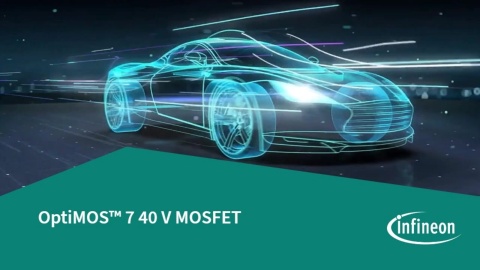
- OptiMOS™ 7 40 volts is Infineon’s new automotive MOSFET technology.
- It presents a 25 percent Ron improvement when compared to the previous OptiMOS™ 6.
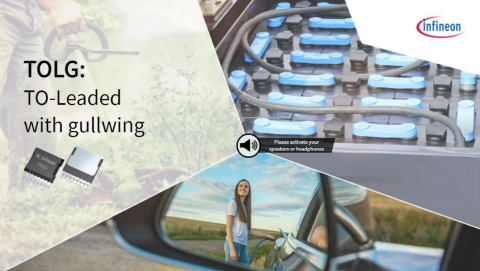
This training explains the benefits of using the TOLG and the target industrial and automotive applications of this package. It also lists the current available portfolio and explains what you will gain by using the package.

- Introduce Infineon’s automotive MOSFETs for electric two-wheeler applications, its key features, benefits, as well as the technical support available
- Identify the target applications of electric two-wheelers that require automotive MOSFETs.
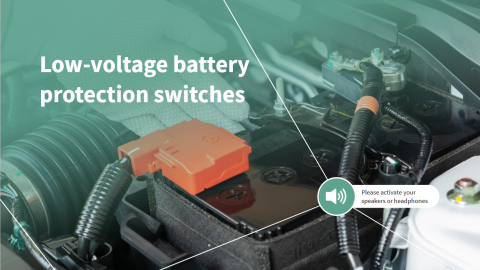
- Know how a typical battery protection switch works and the importance of MOSFET avalanche robustness
- Identify the best-in-class Infineon offerings of demo boards, MOSFETs and gate drivers
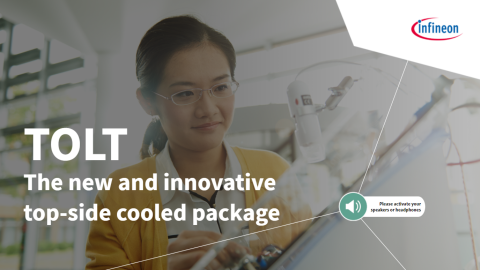
In this video, you will:
- Be familiar with top-side cooling, its uses and benefits
- Learn how you can get the most out of your TOLT package
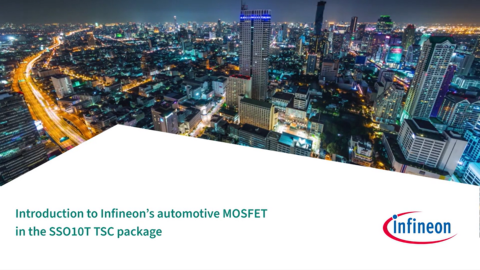
- Infineon has been expanding the package portfolio for it’s high-performing OptiMOS™ MOSFETs.
- Do you know SSO10T, the latest addition to Infineon’s package family for OptiMOS™ MOSFETs?

- Infineon’s Dual Gate MOSFET (IAUTN08S5N012L) is an 80 V product with an RDS of 1.15 milliohms, making it an ideal choice for use in disconnect switches
- Learn more about this product and its use in power distribution applications in this training

- Be familiar with Infineon’s measures to reduce the failure rate and to prove the quality level of a product
- Identify the right product based on given target application requirements

- Get to know today`s fast growing automotive MOSFET market.
- Know more about Infineon`s wide MOSFET selection for 48 V mild-hybrid electric vehicle, or MHEV, applications.

- Learn how Infineon defines a true culture of quality.
- Get to know Infineon`s Zero Defect approach and how Infineon goes beyond the requiriments when it comes to automotive MOSFET qulification.

- Get to know Infineon’s Automotive MOSFET data sheet.
- Improve your understanding of the parameters and diagrams in the document, which will help you better evaluate the device’s limits and capabilities.
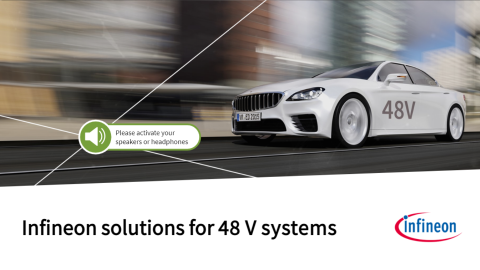
- Know the different 48 V applications for the new drivetrain architectures.
- Get an overview of Infineon`s comprehensive MOSFET portfolio.
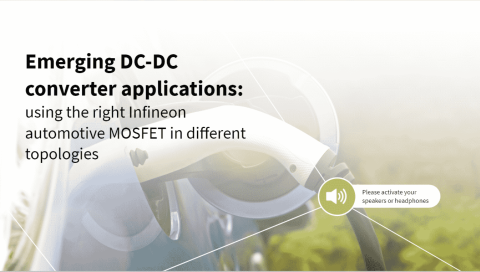
- Have an overview of the converters needed in electric vehicles.
- Analyze the 2-quadrant converter topology in buck and boost mode and the half-bridge converter with center tap rectification topology.

- Recognize the different types of setups in the data sheets.
- Be able to calculate the junction-to-ambient thermal resistance value, the power losses, and the static DC current.




